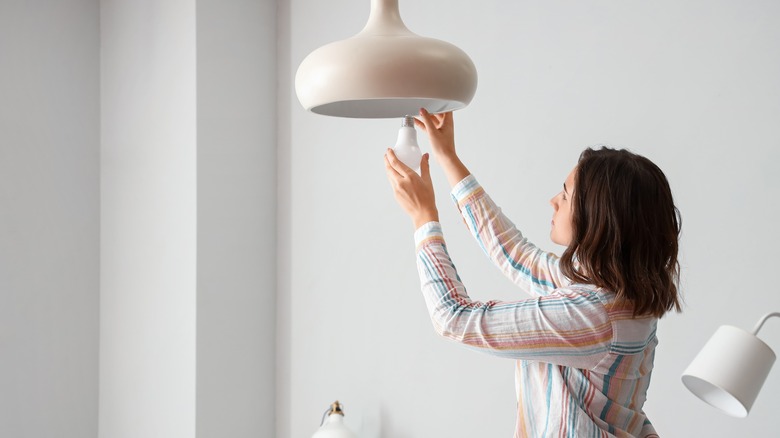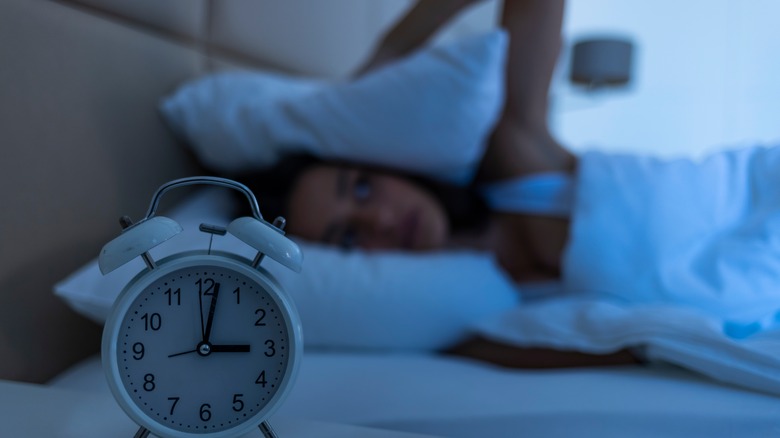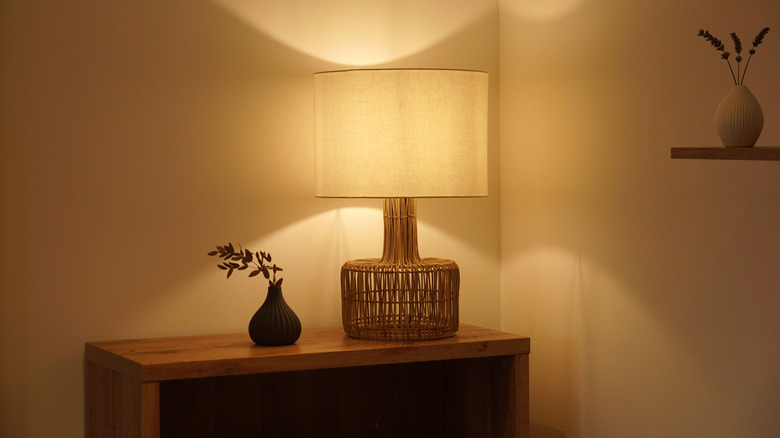The Type Of Lightbulb You Should Avoid Using In The Bedroom
While each type of lightbulb operates a bit differently, they also each emit a different type of light, with some being harsh and direct with others radiating a softer glow. Additionally, each type of bulb also emits light of a different color temperature, ranging from cool to warm — with warmer light being more appropriate for a room like a bedroom.
In addition to considering energy efficiency when choosing the right type of lightbulbs for your space, it's also important to consider the effect that light from a particular bulb will have on a room. While this is important to keep in mind when replacing lightbulbs in every room of the house, it's especially important in your bedroom.
While modern LED bulbs last longer and are more energy efficient than all other types of lightbulbs, they also emit a lot of blue light — more than any other type of lightbulb. Exposure to blue light should be avoided in the bedroom, as it can lead to sleep disruption and circadian rhythm dysfunction.
Blue light and sleep
According to the CDC, exposure to blue light from LED bulbs before bed can disrupt your circadian rhythm, making it more difficult for you to fall asleep at night and equally as difficult to stay asleep once you do manage to doze off. Not only does relying on an LED bulb to illuminate your bedroom make it all but impossible for you to avoid blue-light exposure when winding down for bed, the harsh blue light from an LED lightbulb first thing in the morning isn't conducive to waking up gently or slowly.
While exposure to blue light during your waking hours is important for suppressing the production of melatonin and helping you feel alert and energized during the day, that same slowed production of natural melatonin at night can leave you tossing and turning while trying to get some sleep. In addition to suppressing melatonin, exposure to blue light is also known to encourage natural melanopsin production in the body — a hormone that also aids in keeping you awake during the day.
By exposing yourself to blue light at night through the use of LED bulbs in the bedroom, your body is essentially tricked into believing that it's daytime when it's not, throwing off your natural sleep and wake cycle. Not only does this lead to fatigue and poor quality sleep, but studies (via Human Molecular Genetics) show that disruption in the body's circadian rhythm can lead to cognitive impairment, metabolic syndrome, and an increase in psychiatric symptoms, such as depression.
What lightbulb to use instead
Because exposure to even a small amount of blue light before bed can contribute to circadian rhythm dysfunction, it's important to regulate how much you expose yourself prior to winding down for the night, especially while in the bedroom — a room meant to provide you with a sense of peace and relaxation. For this reason, CFL bulbs are a good choice for the bedroom, as they naturally emit less blue light than LED bulbs. While CFLs aren't as energy-efficient as their LED counterparts, they're still four times more energy-efficient and last 10 times longer on average than incandescent bulbs of the past.
Though cool LED bulbs are more energy-efficient and most commonly available today, more of these lightbulbs are being designed to produce a warm, soft glow, while still being more energy-efficient than CFLs. If you prefer the energy efficiency of LED bulbs or are simply drawn to the increased brightness that they offer your dark bedroom, be sure to at least choose the option that emits the warmest light possible to give yourself a chance at a good night's sleep. Some LED bulbs will have an indication on the box that they are designed to give off a warmer, softer light than other LEDs.


